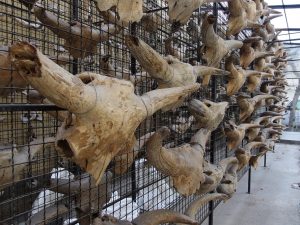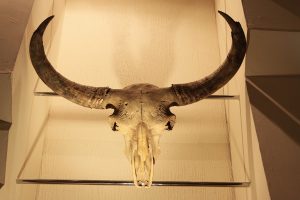| Project duration: | 2016-2022 |
|---|---|
| Project status: | Active |
| Project leader: | Emilia Hofman-Kamińska (MRI PAS) |
| Supervisor: | Dr. Rafał Kowalczyk (MRI PAS) |
Description of the project:
Steppe bison (Bison priscus) – one of the last megaherbivores – became extinct in Europe in the late Pleistocene and Early Holocene transition (the youngest specimens are dated to 11,220 yrs BP). In north-eastern Siberia this species disappeared around 8,860 yrs BP. The aim of the study is to analyze the pattern of habitat use and diet of steppe bison in Europe and northeastern Siberia during the late Pleistocene (50,000-11,700 years ago), in the three geographic regions differing in the composition of the dominant groups of vegetation in the gradient from open areas of tundra with the dominance of herbaceous plants (Yakutia), through the areas with the dominance of herbaceous plants and shrubs, but with admixture of tree species typical for boreal forests (eastern Ukraine), to areas with mosaic of open habitats dominated by herbaceous plants and temperate and boreal forests (Serbia). The planned study are aimed to extend the knowledge about the impact of climate and environmental changes during the Late Pleistocene and Early Holocene on the extinction of large herbivores.
The main questions asked during the project are as follows:
- Was the foraging ecology of steppe bison reflecting the structure of the vegetation cover in the areas of its occurrence in different climatic and environmental conditions?
- Was the steppe bison a species with a narrow spectrum of diet and habitat use, making it less adapted to dramatic climate and environmental changes during the Late Pleistocene and Pleistocene/Holocene transition?
- Does the stability of open tundra-steppe environments in the Late Pleistocene in northeastern Siberia contributed to much later than in Europe extinction of steppe bison in this area?
The project will be conducted with the use of fossil bones and teeth of Bison priscus, using the following methods:
- Radiocarbon datings (14C) or uranium-thorium-lead (U-Th-Pb) dating of bone/ teeth samples of fossil material in order to determine their age.
- Analysis of carbon δ13C and nitrogen δ15N stable isotope composition in bone/teeth collagen to investigate the diet and foraging habitat types.
- Three-dimensional dental microwear texture analysis (3D-DMTA) to determine the diet.

